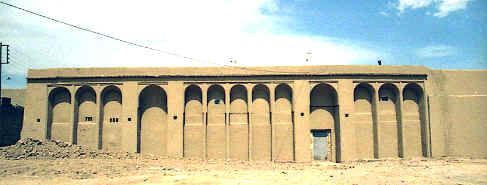|
|
The majority of Yazd's historical relics, which is remained, is mostly related to the era after Sassanid. Among the city's pre-Islam vestiges, however, one is the petroglyph on a cave wall in Ernan Mountain, south of Yazd. The engravings depict spear-wielding men chasing high-horned wild goats.
Meibod's Narin Castle, too, has in it traces of both Islamic and pre-Islamic architecture. Among the valuable historical grounds identified in the province are Kasnavieh Hills (north of Yazd), Mir Jafar Hills (in the vicinity of Bafq) and Shohaba (Fahraj Martyrs’ compound), which have been archeologically studied on a case-to-case basis.
The city's most outstanding infrastructure and historical feature is its underground water canals (Ghanat). These canals are, in fact, the basis on which the foundation of urban development has been laid in a very logical way.
Many houses, schools, bazaars and mosques are connected to the underground canals by gutters, grooves, rivulets and ponds. The canals, after watering residential quarters, continue towards north to irrigate agricultural lands.

Yazd City
Photo by: Masoud Soheili
|
|

